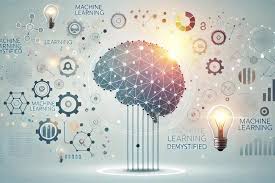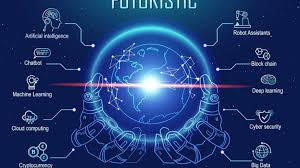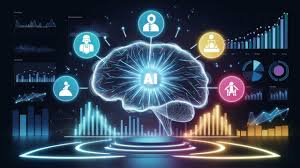Machine learning (ML) is one of the most exciting and transformative technologies of the modern age. As a subset of artificial intelligence (AI), it enables machines to learn from data and make decisions without being explicitly programmed. This revolutionary technology is already reshaping industries, from healthcare and finance to retail and transportation. But what exactly is machine learning, and how can beginners get started on this exciting journey?
In this article, we will break down the concept of machine learning in simple terms, explore its practical applications, and provide essential tips for anyone looking to dive into this fascinating field.
What is Machine Learning?
Machine learning is a field of computer science that uses algorithms to analyze data, learn from it, and make predictions or decisions based on that data. Unlike traditional software programs that follow predefined rules, machine learning systems improve their performance over time as they are exposed to more data.
In essence, machine learning allows computers to “learn” patterns from data and then make decisions or predictions with minimal human intervention. There are three main types of machine learning:
- Supervised Learning: The machine is trained on labeled data (i.e., data that is already tagged with the correct answer). It uses this data to predict the outcome of new, unseen data. Common applications include email spam detection and image recognition.
- Unsupervised Learning: In this type, the machine is given unlabeled data and tasked with finding patterns or relationships within it. Examples include customer segmentation and anomaly detection.
- Reinforcement Learning: The machine learns through trial and error. It receives feedback from its actions (rewards or penalties) and improves its behavior over time. Reinforcement learning is commonly used in robotics, game AI, and self-driving cars.
How Does Machine Learning Work?
Machine learning relies on large amounts of data and powerful algorithms to uncover patterns and insights. Here’s a simplified breakdown of the process:
- Data Collection: Data is gathered from various sources. This data can be anything from text, images, and audio to numerical data and user behavior patterns.
- Data Preparation: Before feeding data into a machine learning model, it must be cleaned and processed. This step involves handling missing data, normalizing values, and transforming features to ensure the model can make accurate predictions.
- Model Selection: Various machine learning models can be used depending on the problem. These models range from decision trees and linear regression to neural networks and deep learning algorithms.
- Training the Model: During training, the model learns from the data by adjusting its internal parameters to minimize errors and improve predictions.
- Testing the Model: After training, the model is tested on new data to see how well it generalizes and makes predictions outside of the training set.
- Deployment and Optimization: Once tested, the model is deployed to make real-time decisions. Continuous monitoring and optimization ensure that the model stays relevant as new data becomes available.
Practical Applications of Machine Learning
Machine learning is already changing the way businesses and industries operate. Here are some exciting examples of how ML is being used today:
- Healthcare: Machine learning algorithms are used to diagnose diseases, predict patient outcomes, and develop personalized treatment plans. For example, deep learning models can analyze medical images to detect conditions like cancer or retinal diseases.
- Finance: In the finance industry, ML algorithms are used for fraud detection, risk assessment, algorithmic trading, and customer service chatbots. Predictive models help banks make informed decisions about loans and investments.
- Retail: Machine learning powers recommendation systems that suggest products to consumers based on their past behavior. Companies like Amazon and Netflix use these systems to personalize the shopping and viewing experience for users.
- Transportation: Self-driving cars use reinforcement learning and sensor data to navigate roads, avoid obstacles, and make decisions. Similarly, machine learning helps optimize logistics, route planning, and traffic management.
- Marketing: ML helps businesses target their audience more effectively by analyzing customer data and predicting preferences. It also plays a major role in improving customer service through chatbots and virtual assistants.
How to Get Started with Machine Learning
If you’re a beginner and want to start learning about machine learning, here are some key steps to guide you:
- Learn the Basics of Programming: To work with machine learning, a solid understanding of programming is essential. Python is the most popular language used in machine learning due to its simplicity and vast library support. Start with basic Python concepts and gradually move to libraries like NumPy, pandas, and Scikit-learn.
- Understand Key Mathematical Concepts: Machine learning involves a lot of mathematics, particularly linear algebra, calculus, probability, and statistics. While you don’t need to be an expert, having a basic understanding of these topics will help you grasp machine learning algorithms more effectively.
- Familiarize Yourself with Machine Learning Algorithms: Study key algorithms such as linear regression, logistic regression, decision trees, k-means clustering, and neural networks. Understanding how these algorithms work is crucial for selecting the right model for your projects.
- Explore Machine Learning Libraries and Tools: Once you have a foundation in programming and math, you can dive into machine learning frameworks and libraries. Popular ones include TensorFlow, Keras, PyTorch, and Scikit-learn. These tools will help you implement machine learning algorithms more efficiently.
- Build Simple Projects: Apply what you’ve learned by building small projects. You could start with basic tasks like image recognition, spam classification, or sentiment analysis. Practical experience is essential for mastering machine learning.
- Take Online Courses and Tutorials: Many online platforms offer courses on machine learning for beginners. Websites like Coursera, edX, and Udemy have comprehensive courses taught by experts in the field.
- Join the Machine Learning Community: Engage with others who are learning machine learning. Participate in online forums, attend meetups, and read research papers to stay up-to-date with the latest trends and developments in the field.
The Future of Machine Learning
Machine learning is still in its early stages, but its potential is limitless. As the technology advances, we can expect even more industries to be transformed. From more accurate medical diagnoses to fully autonomous vehicles, machine learning will continue to innovate and improve our daily lives.
Additionally, with the rise of deep learning and neural networks, machine learning is moving towards more complex and powerful systems that mimic human-like decision-making processes. As a beginner, now is the perfect time to start exploring this exciting field and position yourself for future opportunities in technology.
Conclusion: Embrace the Future of Technology
Machine learning is no longer just a buzzword—it is a technology that is rapidly shaping the future of various industries. Understanding the fundamentals of ML and how it works can open up new possibilities in both your personal and professional life. Whether you’re a beginner or already have some experience, now is the time to dive into the world of machine learning and become part of this transformative technological revolution.
Keywords: machine learning, artificial intelligence, ML for beginners, machine learning algorithms, data science, supervised learning, unsupervised learning, reinforcement learning, deep learning, Python for machine learning, machine learning applications, future of technology, healthcare technology, finance technology, machine learning tutorials, programming for ML, ML projects, machine learning libraries, TensorFlow, Keras, neural networks, AI advancements, machine learning community, machine learning resources, learning algorithms, practical machine learning, predictive modeling, data analysis, autonomous vehicles, digital transformation.




